#texas crisis
Text
#trump#donald trump#kamala harris#trump 2024#democrats#vote kamala#kamala 2024#kamala for president#vp kamala harris#cats of tumblr#cute cats#catsofinstagram#warrior cats#cats#feline#ohio news#cincinnati ohio#columbus ohio#ohio#daytonohio#springfield#haitian#haiti#immigration#immigrants#illegal immigration#texas#border crossings#border crisis#rfk jr
621 notes
·
View notes
Text
"Solar accounted for most of the capacity the nation added to its electric grids last year. That feat marks the first time since World War II, when hydropower was booming, that a renewable power source has comprised more than half of the nation’s energy additions.
“It’s really monumental,” said Shawn Rumery, senior director of research at the Solar Energy Industries Association, or SEIA. The trade group announced the 2023 numbers in a report released today [March 6, 2024] with analytics firm Wood MacKenzie. The 32.4 gigawatts that came online in the United States last year shattered the previous high of 23.6 gigawatts recorded in 2021 and accounted for 53 percent of new capacity. Natural gas was next in line at a distant 18 percent.
SEIA called 2023 the best year for renewables since the Second World War. Texas and California led a solar surge driven mostly by utility-scale installations, which jumped 77 percent year-over-year to 22.5 gigawatts. The residential and commercial sectors also reached new milestones. Only the relatively nascent community solar market missed its previous mark, though not by much, said Rumery. Overall he called it an “almost record setting year across the industry.”
...Experts generally expect renewable energy to keep on its torrent trajectory.
“It’s very likely to continue because solar and wind are now very well established,” said Rob Stoner, director of the MIT Energy Initiative. “Solar costs continue to fall far below where we ever thought they would.”"
-via Grist, March 6, 2024
#clean energy#green energy#climate change#crisis#climate action#climate hope#renewables#solar power#united states#texas#california#good news#hope
1K notes
·
View notes
Text
WTF?
About the surge of illegal immigrants in El Paso:
The TX National Guard & Dept. of Public Safety quickly regained control & are redoubling the razor wire barriers.
DPS is instructed to arrest every illegal immigrant involved for criminal trespass & destruction of property. 🤔
#pay attention#educate yourselves#educate yourself#knowledge is power#reeducate yourself#reeducate yourselves#think about it#think for yourselves#think for yourself#do your homework#do some research#do your own research#ask yourself questions#question everything#news#texas#border crisis#el paso#military
398 notes
·
View notes
Text
BREAKING: gen z driver who asked "why is he going so slow" @ hulkenberg is about to find out just how slow the car is gonna go

[x]
#f1#ollie bearman#god silly season is something isn't it#also this means op81 is not the maknae anymore#good. give that man an age crisis and compel him to drive like a madman to get that wdc by 2028#anyway all hail the arrival of ob38#*ob87 as it now turns out#to his credit tho#haas was p6 and p8 recently?!??#polar bears in arlington texas???? frrrrr#let's go ollie let's go !
97 notes
·
View notes
Text
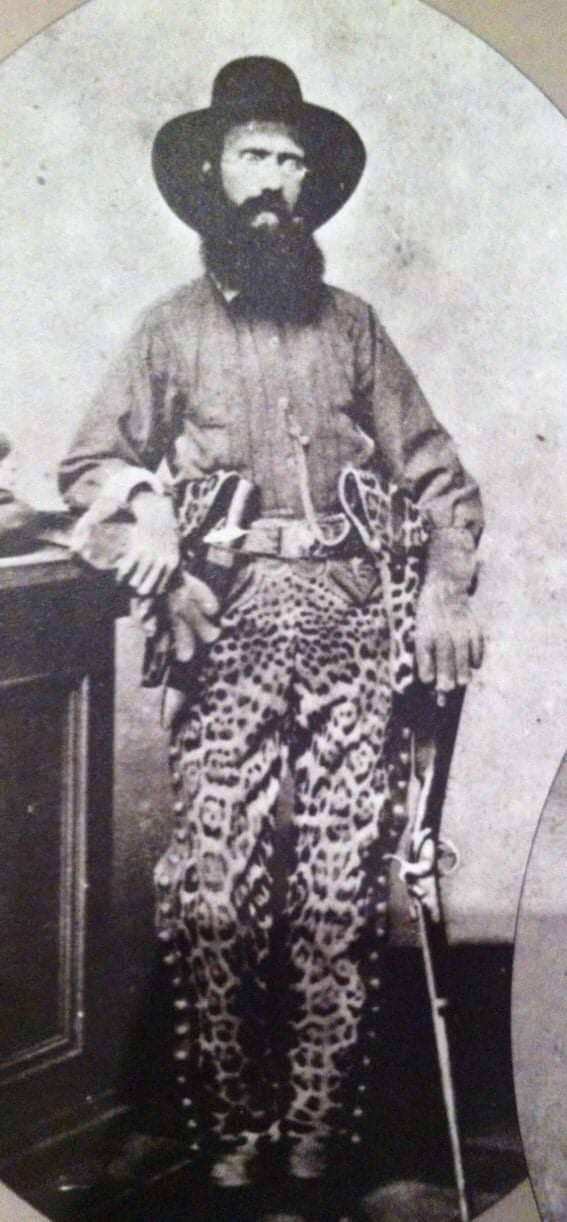
CSA Cpt Samuel Richardson of the 2nd Texas Cavalry wearing jaguar hide calzoneras and holsters made in Mexico.
#some of you had a war going on#csa cpt semuel richardson of the 2nd texas cavalry had a midlife crisis#history#clothing#uniform
660 notes
·
View notes
Text
In case you’re wondering how the summer is going in Texas lately, 2 separate people told me they we “so glad it’s finally gotten cooler.” The high today was 99.
195 notes
·
View notes
Text
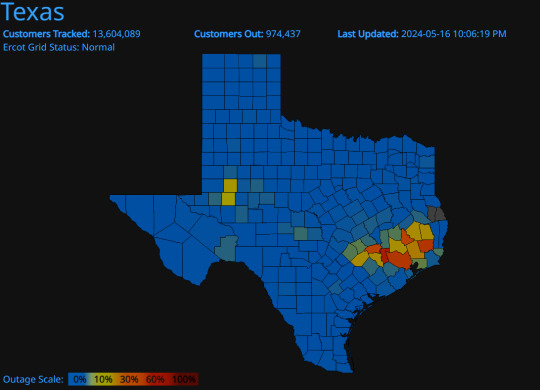
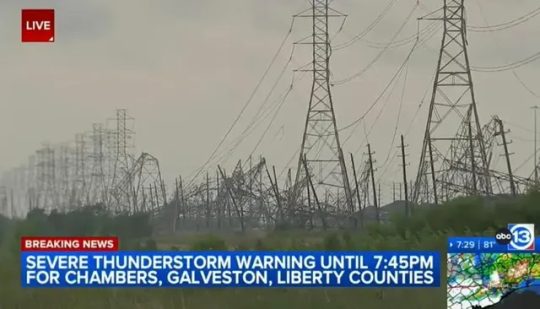
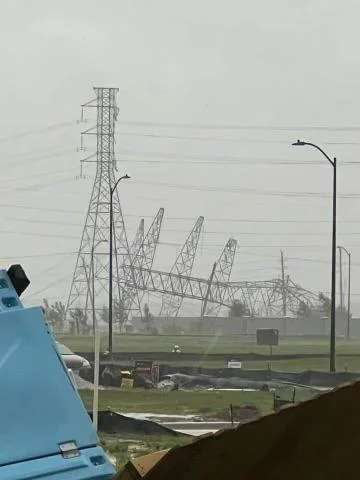
i know there's a lot going on, but i'm surprised that i'm not seeing more about what's going on in Houston, Texas.
a massive storm hit southeast Texas and has knocked power out for close to 1 mil people and a rumor circulating that it could be out for weeks. 4 confirmed dead so far.
these types of massive storms have become much more frequent across the country and can be attributed to the effects of climate change. Houston is unfortunately the latest victim. life-threatening flooding conditions are now eminent for the remainder of the US south. adding another layer to this, there's also going to be a massive uptick in mosquitos due to the flooding that is already showing itself in the Houston area.
the lights are blinking red with warning signals at this point.
edit: if anyone has any links or resources to help folks in the Houston area, please drop them in a DM and i'll gladly share it in a reblog of this post
38 notes
·
View notes
Text
#palestine#free palestine#undocumented immigrants#undocumented people#human crisis#crimes against children#crimes against humanity#silent genocide#el paso#texas#genocide#people of color#from the river to the sea palestine will be free#save palestine#save the people#immigrants#human#black lives matter#gazaunderfire#tmblr fyp#tiktok fyp#what wester news won't show#fyppage#fyp#tumblr#fyp tumblr#daily post#journalist#thanks to journalist we what is happening in gaza#social justice
97 notes
·
View notes
Text
″Any and all laws that are in conflict with the Constitution are invalid and of no force or effect.″ (The case of Marbury v. Madison was heard in 1803)
“When tyranny becomes law, rebellion becomes duty.”
Thomas Jefferson
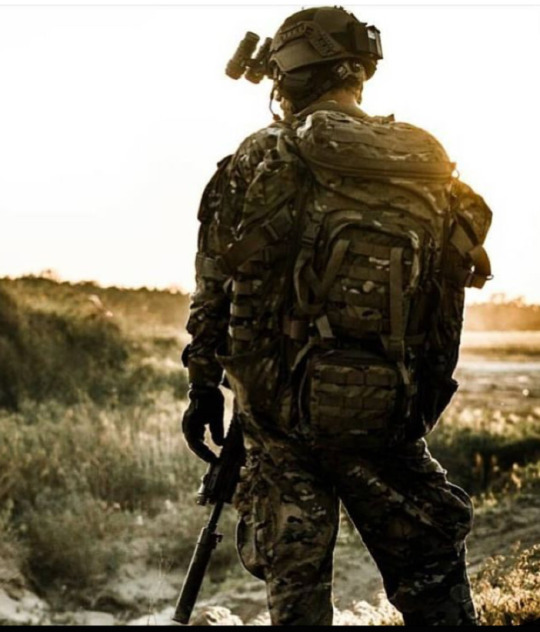
A march toward Texas may be necessary…
62 notes
·
View notes
Text
Texas Has Lit The Fuse! Go Texas! 🇺🇲
Dont Mess with Texas!
youtube
52 notes
·
View notes
Text
Saving Houston’s LGBTQ history through thousands of hours of radio archives
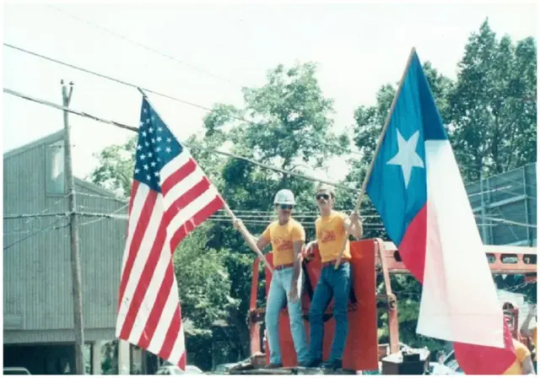
1984 Houston Pride Parade 📷 JD Doyle
For years, hundreds of fragile cassette tapes sat quietly aging in a storage locker in Houston, Texas. Each plastic case contained hours of radio shows, made for and by LGBTQ people.
The first shows aired in the mid-1970s. They continued, off and on, for more than 30 years -- a period that included the AIDS crisis, the women’s liberation movement and the rise of LGBT civil rights. A pair of archivists, Emily Vinson and Bethany Scott, have been working on preserving the programs, thousands of hours of them, online.
…
The shows aired on KPFT (90.1), Houston’s Pacifica station. One of them, Wilde ‘n’ Stein (named for Oscar Wilde and Gertrude Stein) started in 1975 and ran through the early 1990s. A late night show, After Hours, ran from 1987 until the early 2000s.
…
Over the years, the producers and hosts of these radio shows brought their listeners live street coverage of Pride parades, music that celebrated LGBTQ experiences and interviews with city council members, activists, local arts luminaries, and public health officials. Because it was on the radio, often late at night, closeted people could listen quietly and discreetly, without the fear of discovery that printed material might bring.
Carl Han, a young Vietnamese-American, listened to the station’s LGBT programming at the lowest possible volume, as he told the radio show After Hours in 1992.
“That’s how I discovered the Montrose [LGBT] community,” he said. “At the age of 15, I hit upon KPFT one night and turned it down real low so no one can hear.” He would go on to be a leading local activist, who at the time of the broadcast was the secretary of Asians and Friends, a community group serving Houston’s LGBTQ Asian Americans.
Such content came as a revelation to 20-year-old Andrea Hoang. As an undergraduate at the University of Houston, one of her campus jobs was to help digitize and transcribe the shows. Hoang, who identifies as queer, was thrilled to discover the voices of Asian-American activists, including Han and After Hours host Vivian Lee, in broadcasts from before she was born.
“They had so many people of color coming onto this show and spearheading these local movements,” she marvels, adding that she also loved learning about the vibrant LGBT music played on the programs so much, she made this Spotify playlist honoring it.
The digitization of this audio history, says Vinson, would not be possible without three Houstonians who safeguarded the cassettes for so many years. Judy Reeves co-founded the Gulf Coast Archive and Museum of Gay, Lesbian, Bisexual, and Transgender History. JD Doyle maintains an extensive website documenting local LGBT history. Jimmy Carper was a longtime host and producer of After Hours.
…
Neda Ulaby | NPR | June 4, 2024
More On NPR >
Listen to Andrea Hoang's archive-inspired Spotify Playlist
#wilde n stein#kpft#after hours#radio station#queer#queer history#asians and friends#lgbqti#lgbt#trans#pride month#pride march#protest#houston#texas#university of houston#aids crisis#1984#1980s#80s#70s#1992#90s#00s#1970s#1977
21 notes
·
View notes
Text
44 notes
·
View notes
Text
Paywall-free version
On the outskirts of Austin, Texas, what began as a fringe experiment has quickly become central to the city’s efforts to reduce homelessness. To Justin Tyler Jr., it is home.
Mr. Tyler, 41, lives in Community First! Village, which aims to be a model of permanent affordable housing for people who are chronically homeless. In the fall of 2022, he joined nearly 400 residents of the village, moving into one of its typical digs: a 200-square-foot, one-room tiny house furnished with a kitchenette, a bed and a recliner.
The village is a self-contained, 51-acre community in a sparsely populated area just outside Austin. Stepping onto its grounds feels like entering another realm.
Eclectic tiny homes are clustered around shared outdoor kitchens, and neat rows of recreational vehicles and manufactured homes line looping cul-de-sacs.
There are chicken coops, two vegetable gardens, a convenience store, art and jewelry studios, a medical clinic and a chapel.
Roads run throughout, but residents mainly get around on foot or on an eight-passenger golf cart that makes regular stops around the property.
Mr. Tyler chose a home with a cobalt-blue door and a small patio in the oldest part of the village, where residents’ cactus and rock gardens created a “funky, hippie vibe” that appealed to him. He arrived in rough shape, struggling with alcoholism, his feet inflamed by gout, with severe back pain from nearly 10 years of sleeping in public parks, in vehicles and on street benches.
At first, he kept to himself. He locked his door and slept. He visited the clinic and started taking medication. After a month or so, he ventured out to meet his neighbors.
“For a while there, I just didn’t want to be seen and known,” he said. “Now I prefer it.”
Between communal meals and movie screenings, Mr. Tyler also works at the village, preparing homes for the dozen or more people who move there each month.
In the next few years, Community First is poised to grow to nearly 2,000 homes across three locations, which would make it by far the nation’s largest project of this kind, big enough to permanently house about half of Austin’s chronically homeless population.
Tiny-home villages for people who have been homeless have existed on a small scale for several decades, but have recently become a popular approach to addressing surging homelessness. Since 2019, the number of these villages across the country has nearly quadrupled, to 124 from 34, with dozens more coming, according to a census by Yetimoni Kpeebi, a researcher at Missouri State University.
Mandy Chapman Semple, a consultant who has helped cities like Houston transform their homelessness systems, said the growth of these villages reflects a need to replace inexpensive housing that was once widely available in the form of mobile home parks and single room occupancy units, and is rapidly being lost. But she said they are a highly imperfect solution.
“I think where we’re challenged is that ‘tiny home’ has taken on a spectrum of definitions,” said Chapman Semple. Many of those definitions fall short of housing standards, often lacking basic amenities like heat and indoor plumbing, which she said limits their ability to meet the needs of the population they intend to serve.
But Community First is pushing the tiny home model to a much larger scale. While most of its homes lack bathrooms and kitchens, its leaders see that as a necessary trade-off to be able to creatively and affordably house the growing number of people living on Austin’s streets. And unlike most other villages, many of which provide temporary emergency shelter in structures that can resemble tool sheds, Community First has been thoughtfully designed with homey spaces where people with some of the highest needs can stay for good. No other tiny home village has attempted to permanently house as many people.
Austin’s homelessness rate has been rapidly worsening, and the city’s response has whipped back and forth... In October [2023], the official estimate put the number of people living without shelter at 5,530, a 125 percent increase from two years earlier. Some of that rise is the result of better outreach, but officials acknowledged that more people have become homeless. City leaders vowed to build more housing, but that effort has been slowed by construction delays and resistance from residents.
Meanwhile, outside the city limits, Community First has been building fast. [Note from below the read more: It's outside city limits because the lack of zoning laws keeps more well-off Austin residents from blocking the project, as they did earlier attempts to build inside the city.] In a mere eight years, this once-modest project has grown into a sprawling community that the city is turning to as a desperately needed source of affordable housing. The village has now drawn hundreds of millions of dollars from public and private sources and given rise to similar initiatives across the country.
This rapid growth has come despite significant challenges. And some question whether a community on the outskirts of town with relaxed housing standards is a suitable way to meet the needs of people coming out of chronic homelessness. The next few years will be a test of whether these issues will be addressed or amplified as the village expands to five times its current size.
-via New York Times, January 8, 2024. Article continues below (at length!)
The community versus Community First
For Alan Graham, the expansion of Community First is just the latest stage in a long-evolving project. In the late 1990s, Mr. Graham, then a real estate developer, attended a Catholic men’s retreat that deepened his faith and inspired him to get more involved with his church. Soon after, he began delivering meals as a church volunteer to people living on Austin’s streets.
In 1998, Mr. Graham, now 67, became a founder of Mobile Loaves and Fishes, a nonprofit that has since amassed a fleet of vehicles that make daily rounds to deliver food and clothing to Austin’s homeless...
Talking to people like Mr. Johnston [a homeless Austin resident who Graham had befriended], Mr. Graham came to feel that housing alone was not enough for people who had been chronically homeless, the official term for those who have been homeless for years or repeatedly and have physical or mental disabilities, including substance-use disorders. About a third of the homeless population fits this description, and they are often estranged from family and other networks.
In 2006, Mr. Graham pitched an idea to Austin’s mayor: Create an R.V. park for people coming out of chronic homelessness. It would have about 150 homes, supportive services and easy access to public transportation. Most importantly, it would help to replace the “profound, catastrophic loss of family” he believed was at the root of the problem with a close-knit and supportive community.
The City Council voted unanimously in 2008 to lease Mr. Graham a 17-acre plot of city-owned land to make his vision a reality. Getting the council members on board, he said, turned out to be the easy part.
When residents near the intended site learned of the plan, they were outraged. They feared the development would reduce their property values and invite crime. One meeting to discuss the plan with the neighborhood grew so heated that Mr. Graham was escorted to his car by the police. Not a single one of the 52 community members in attendance voted in favor of the project.
After plans for the city-owned lot fell apart and other proposed locations faced similar resistance, Mr. Graham gave up on trying to build the development within city limits.
In 2012, he instead acquired a plot of land in a part of Travis County just northeast of Austin. It was far from public transportation and other services, but it had one big advantage: The county’s lack of zoning laws limited the power of neighbors to stop it.
Mr. Graham raised $20 million and began to build. In late 2015, Mr. Johnston left the R.V. park he had been living in and became the second person to move into the new village. It grew rapidly. In just two years, Mr. Graham bought an adjacent property, nearly doubling the village’s size to 51 acres and making room for hundreds more residents.
And then in the fall of 2022, he broke ground on the largest expansion yet: Adding two more sites to the village, expanding it by 127 acres to include nearly 2,000 homes.
“No one ever really did what they first did, and no one’s ever done what they’re about to do,” said Mark Hilbelink, the director of Sunrise Navigation Center, Austin’s largest homeless-services provider. “So there’s a little bit of excitement but also probably a little bit of trepidation about, ‘How do we do this right?’”
What it takes to make a village
Since he moved into Community First eight years ago, Mr. Johnston has found the stability that eluded him for so long. Most mornings, he wakes up early in his R.V., feeds his scruffy adopted terrier, Amos, and walks a few minutes down a quiet road to the village garden, where neat rows of carrots, leeks, beets and arugula await his attention.
Mr. Johnston worked in fast-food restaurants for most of his life, but he learned how to garden at the village. He now works full time cultivating produce for a weekly market that is free to residents.
“Once I got here, I said, This is where I’m going to spend pretty much my entire life now,” Mr. Johnston said.
Everyone at the village pays rent, which averages about $385 a month. The tiny homes that make up two-thirds of the dwellings go for slightly lower, but have no indoor plumbing; their residents use communal bathhouses and kitchens. The rest of the units are R.V.s and manufactured homes with their own bathrooms and kitchens.
Like Mr. Johnston, many residents have jobs in the village, created to offer residents flexible opportunities to earn some income. Last year, they earned a combined $1.5 million working as gardeners, landscapers, custodians, artists, jewelry makers and more, paid out by Mobile Loaves and Fishes.
Ute Dittemer, 66, faced a daily struggle for survival during a decade on the streets before moving into Community First five years ago with her husband. Now she supports herself by painting and molding figures out of clay at the village art house, augmented by her husband’s $800 monthly retirement income. A few years ago, a clay chess set she made sold for $10,000 at an auction. She used the money to buy her first car.
“I’m glad that we are not in a low-income-housing apartment complex,” she said. “We’ve got all this green out here, air to breathe.”
A small number of residents have jobs off-site, and a city bus makes hourly stops at the village 13 times a day to help people commute into town.
But about four out of five residents live on government benefits like disability or Social Security. Their incomes average $900 a month, making even tiny homes impossible to afford without help, Mr. Graham said.
“Essentially 100 percent of the people that move into this village will have to be subsidized for the rest of their lives,” he said.
For about $25,000 a year, Mr. Graham’s organization subsidizes one person’s housing at the village. (Services like primary health care and addiction counseling are provided by other organizations.) So far, that has been paid for entirely by private donations and in small part from collecting rent.
This would not be possible, Mr. Graham said, without a highly successful fund-raising operation that taps big Austin philanthropists. To build the next two expansions, Mr. Graham set a $225 million fund-raising goal, about $150 million of which has already been obtained from the Michael and Susan Dell Foundation, the founder of the Patrón Spirits Company, Hill Country Bible Church and others.
Support goes beyond monetary donations. A large land grant came from the philanthropic arm of Tito’s Handmade Vodka, and Alamo Drafthouse, an Austin-based cinema chain, donated an outdoor amphitheater for movie screenings. Top architectural firms competed for the chance to design energy-efficient tiny homes free of charge. And every week, hundreds of volunteers come to help with landscaping and gardening or to serve free meals.
Around 55 residents, including 15 children, live in the village as “missionals” — unpaid neighbors generally motivated by their Christian faith to be part of the community.
All missionals undergo a monthslong “discernment process” before they can move in. They pay to live in R.V.s and manufactured homes distinguished by an “M” in the front window. Their presence in the community is meant to guard against the pitfalls of concentrated poverty and trauma.
“Missionals are our guardian angels,” said Blair Racine, a 69-year-old resident with a white beard that hangs to his chest. “They’re people we can always call. They’re always there for us.”
After moving into the village in 2018, Mr. Racine spent two years isolated in his R.V. because of a painful eye condition. But after an effective treatment, he became so social that he was nicknamed the Mayor. Missional residents drive him to get his medication once a week, he said. To their children he is Uncle Blair.
Though the village is open to people of any religious background, it is run by Christians, and public spaces are adorned with paintings of Jesus on the cross and other biblical scenes. The application to live in the community outlines a set of “core values” that refer to God and the Bible. But Mr. Graham said there is no proselytizing and people do not have to be sober or seek treatment to live there.
Mr. Graham lives in a 399-square-foot manufactured home in the middle of the village with his wife, Tricia Graham, who works as the community’s “head of neighbor care.” He said they do not have any illusions about solving the underlying mental-health and substance-use problems many residents live with, and that is not their goal.
“This is absolutely not nirvana,” Mr. Graham said. “And we want people to understand the beauty and the complexity of what we do. I wouldn’t want to be anywhere else on the face of the planet than right here in the middle of this, but you’re not fixing these things.” ...
From an experiment to a model
Community First has already inspired spinoffs, with some tweaks. In 2018, Nate Schlueter, who previously worked with the village’s jobs program, opened Eden Village in his hometown, Springfield, Mo. Unlike in Community First, every home in Eden Village is identical and has its own bathroom and kitchen. Mr. Schlueter’s model has spread to 12 different cities with every village limited to 50 homes or fewer.
“Not every city is Austin, Texas,” Mr. Schlueter said. “We don’t want to build a large-scale village. And if the root cause of homelessness is a loss of family, and community is something that can duplicate that safety net to some extent, to have smaller villages to me seemed like a stronger community safety net. Everybody would know each other.”
The rapid growth of Community First has challenged that ideal. In recent years, some of the original missional residents and staff members have left, finding it harder to support the number of people moving into the village. Steven Hebbard, who lived and worked at the village since its inception, left in 2019 when he said it shifted from a “tiny-town dynamic” where he knew everyone’s name to something that felt more like a city, straining the supportive culture that helped people succeed.
Mobile Loaves and Fishes said more staff members had recently been hired to help new residents adjust, but Mr. Graham noted that there was a limit to what any housing provider could do without violating people’s privacy and autonomy.
Despite these concerns, the organization, which had been run entirely on private money, has recently drawn public support. In January 2023, Travis County gave Mobile Loaves and Fishes $35 million in American Rescue Plan Act funds to build 640 units as part of its expansion.
Then four months later came a significant surprise: The U.S. Department of Housing and Urban Development approved the use of federal housing vouchers, which subsidize part or all of a low-income resident’s rent, for the village’s tiny homes. This will make running the village much more financially sustainable, Mr. Graham said, and may make it a more replicable blueprint for other places.
“That’s a big deal for us, and it’s a big deal on a national basis,” Mr. Graham said. “It’s a recognition that this model, managed the way that this model is, has a role in the system.”
Usually, the government considers homes without indoor plumbing to be substandard, but, in this case, it made an exception by applying the housing standards it uses for single-room-occupancy units. The village still did not meet the required ratio of bathrooms per person, but at the request of Travis County and the City of Austin’s housing officials, who cited Austin’s “severe lack of affordable housing” that made it impossible for some homeless people with vouchers to find anywhere else to live, HUD waived its usual requirements.
In the waiver, a HUD staffer wrote that Mr. Graham told HUD officials over the phone that the proportion of in-unit bathrooms “has not been an issue.” But in conversations with The Times, other homeless-service providers in Austin and some village residents said the lack of in-unit bathrooms is one of the biggest problems people have with living there. It also makes the villages less accessible to people with certain disabilities and health issues that are relatively common among the chronically homeless....
Mr. Graham said that with a doctor’s note, people could secure an R.V. or manufactured home at the village, although those are in short supply and have a long waiting list. He said the village’s use of tiny homes allowed them to build at a fraction of the usual cost when few other options existed, and helps ensure residents aren’t isolated in their units, reinforcing the village’s communal ethos.
“If somebody wants to live in a tiny home they ought to have the choice,” Mr. Graham said, “and if they are poor we ought to respect their civil right to live in that place and be subsidized to live there.” But he conceded that for some people, “this might not be the model.”
“Nobody can be everything for everyone,” he said.
By the spring of 2025, Mr. Graham hopes to begin moving people into the next phase of the village, across the street from the current property. The darker visions some once predicted of an impoverished community on the outskirts of town overtaken by drugs and violence have not come to pass. Instead, the village has permanently housed hundreds of people and earned the approval and financial backing of the city, the county and the federal government. But for the model to truly meet the scale of the challenge in Austin and beyond, Chapman Semple said, the compromises that led to Community First in its current incarnation will have to be reckoned with.
“We can build smaller villages that can be fully integrated into the community, that can have access to amenities within the community that we all need to live, including jobs and groceries,” Chapman Semple said. “If it’s a wonderful model then we should be embracing and fighting for its inclusion within our community.”
-via New York Times, January 8, 2024
#housing crisis#unhoused#homelessness#homeless#housing#affordable housing#austin texas#austin#texas#texas news#united states#usa#poverty#cost of living#tiny home#tiny house#social support#community#good news#hope
386 notes
·
View notes
Text
Texas National Guard boat operators deter illegal immigration at Shelby Park, Texas 🤔
#pay attention#educate yourselves#educate yourself#knowledge is power#reeducate yourself#reeducate yourselves#think about it#think for yourselves#think for yourself#do your homework#do some research#do your own research#ask yourself questions#question everything#news#texas#border crisis
311 notes
·
View notes
Text
Migrants Are Pouring Through The Border And Texas Can't Do Anything Abou...
youtube
46 notes
·
View notes
Text

Exactly what language is Trump speaking? Professional translators are often baffled. But we do hear echoes of 1930s Germany in his diminishing attempts at communication.
Trump echoes Nazi propaganda and pushes lie that ‘no one speaks languages’ of migrants in wild border speech
This vid includes Trump's pseudo-English at Eagle Pass.
youtube
If you're an English teacher, get your students to attempt to transcribe some of Trump's attempts at human speech.
#donald trump#cognitive decline#languages#incoherence#nazi propaganda#eagle pass#texas#republican presidential nomination#trump derailed border reform so he could continue to rant about migrants#trump border crisis#election 2024#vote blue no matter who#Youtube
26 notes
·
View notes